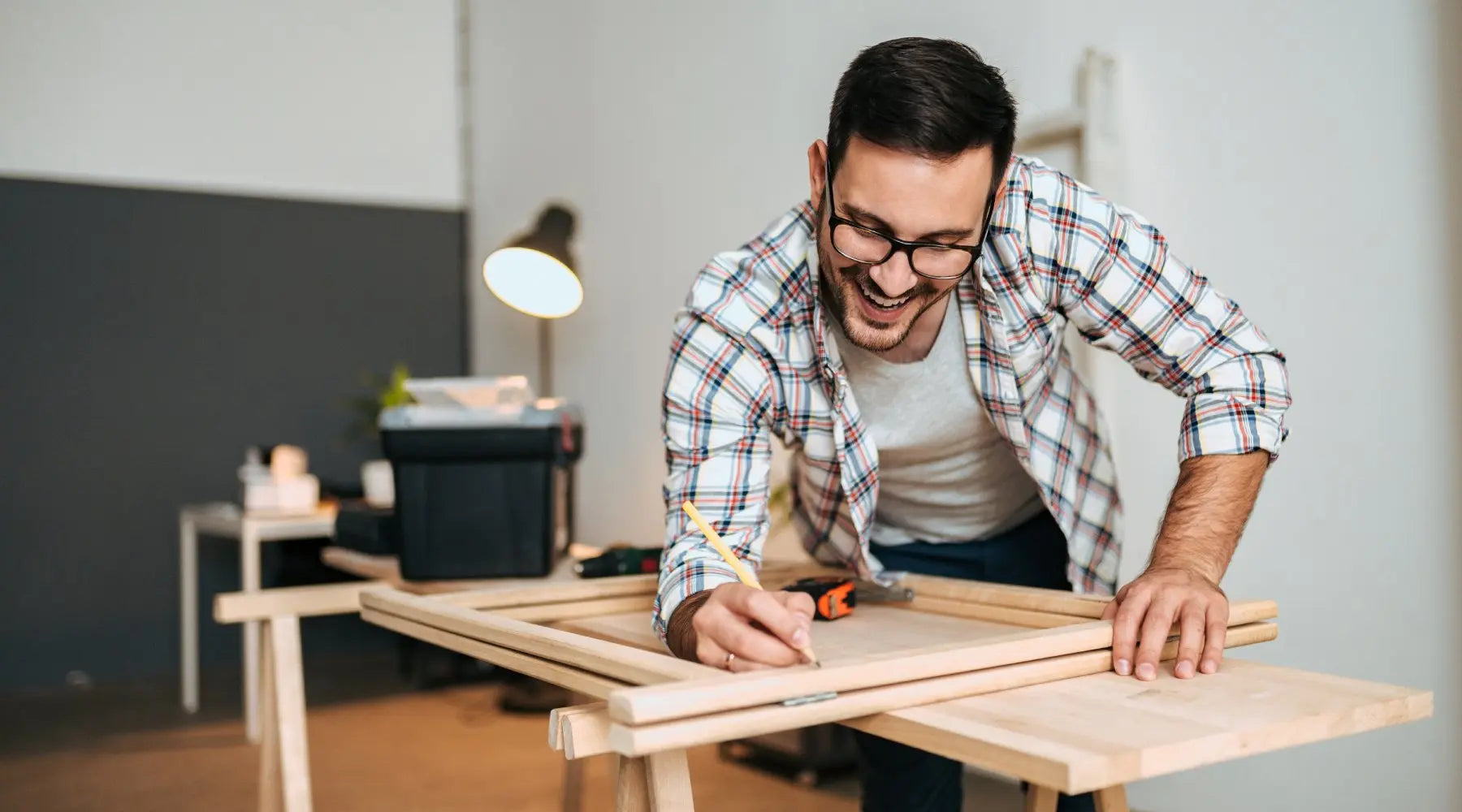There’s something undeniably satisfying about rolling up your sleeves, grabbing a wrench, and solving a problem yourself. DIY projects carry the promise of saved cash, newfound confidence, and maybe even a few bragging rights. But as tempting as it can be to tackle every project yourself, there’s also a fine line between handyman heroics and spiraling into a DIY disaster. Knowing when to flex your DIY skills at home can save you money, time, and a whole load of unnecessary stress.
This guide will help you identify which fix-it opportunities to take on and when it’s best to call in the pros. From patching a hole in the wall to rewiring your house (please don’t), here’s how to decide which projects are for you.
Small Wins Are Your DIY Playground
As a general rule, if the problem is simple and low risk, your DIY confidence can shine. Think along the lines of fixing a minor drywall ding or reattach kitchen cabinet knobs that have fallen off. These small fixes are perfect for testing your skills. You can learn, make changes if things doesn’t go perfectly the first time, and come out of the experience feeling like a problem-solving pro.
Just remember that even the smallest projects need a plan. A botched paint patch can make your wall look worse than it did before. A bumpy, streaked finish is the kind of rookie move that’s more “sad bachelor pad” than “worldly gentleman’s home.”
Plumbing Problems To (Mostly) Avoid
Does your sink drip constantly, mocking you night and day? By all means, grab a wrench and tighten things up. You might even replace the O-ring if you’re feeling bold. But when it comes to bigger issues like clogged sewer lines or replacing a toilet, leave the work to the pros. One slip and you’re ankle-deep in a watery catastrophe. Nobody pulls off a put-together vibe while plowing through YouTube tutorials in a panic.
Electrical Work Calls for Extra Caution
Some DIYers think they can handle everything from replacing outlets to installing new light fixtures. But remember, electricity has no patience for amateur mistakes. Sure, you might save a few bucks swapping out a light switch, but is it worth the risk of turning your home into a literal hotspot? The same goes for your ride. Knowing when to turn to a qualified mechanic for your car’s electrical problems can keep you and your vehicle safe, unlike playing the hero because “the guys on the car forum said it’s easy.”
Sometimes, a little humility and a licensed electrician’s help are all you need.
Furniture Assembly Chaos
Ah, the curse of flat-pack furniture. Missing screws, incomprehensible instructions, and vague diagrams seem like initiation rites of adulthood. The good news is that you probably won’t break anything while figuring out where Piece A connects to Part 14. The bad news is that you might teach your neighbors a new vocabulary of curse words in the process.
Practice patience, grab a power drill if allowed, and recruit a buddy for backup. As you DIY this one, keep in mind that rushing and skipping steps will lead to a wobbly masterpiece or a coffee table disaster.
Outdoor DIY Projects That Impress
A freshly cleaned grill or a perfectly power-washed patio can elevate your space. Pressure washing is one task you can DIY, and doing so might make you look like a home improvement wizard. Landscaping, on the other hand, requires patience and precision. If your plans start and stop at planting a strawberry patch, knock yourself out. If you’re envisioning a retaining wall, it’s better to talk to the pros. Rocky, uneven landscaping and installations tend to say “DIY flop” more than they do “zen retreat.”
Cooking Up Confidence in the Kitchen
DIY skills don’t stop at hammers and drills. Developing your kitchen repertoire is one of the most underrated yet impactful ways to improve your life. A well-cooked meal is not only impressive but also elevates your day-to-day living experience. Experiment with new recipes, perfect old classics, and play around with plating. The kitchen’s a great place to kickstart your self-improvement journey this year by taking on new challenges.
When you can whip up homemade pasta or a perfectly seared steak, you won’t just feel accomplished—you’ll look it too.
Spotting the High-Stakes No-Gos
Before you whip out the tools, evaluate the stakes of the project. Anything involving structural integrity, major appliances, or gas lines should be a hard stop. The last thing you need is a home resting solely on a wall you built or gas leaks turning into explosions.
Classified glass repair also fits this category. Fixing your cracked iPhone screen or double-pane window might seem conquerable, but one wrong move and you’ll be knee-deep in replacements instead of repairs.
The Fine Art of Tool Buying
Delving into the DIY world doesn’t mean establishing a fully-equipped tool garage at home. There’s an art to tool selection. Start with the basics. A solid hammer, a set of screwdrivers, and a reliable power drill should be your starting trio. Resist the urge to buy that fancy oscillating multi-tool if you don’t even know what it does yet.
Overloading your toolbox leads to analysis paralysis later. Plus, properly using tools is just as important as owning them. A true DIY-er learns what he needs and uses those tools masterfully; he doesn’t hoard gear like a misguided garage collector.
Brilliant Bathroom Renovations (That Don’t Bomb)
Your bathroom is a secret vanity project waiting to happen. Swapping showerheads or even re-caulking tiles can make a huge difference despite how little effort is involved. But the moment you think about demolishing walls or re-routing water lines, pause. Pros use advanced, well-practiced techniques to prevent mold or water damage, and a Pinterest dream could quickly devolve into a waking nightmare without their expertise.
Stick to surface changes and aesthetic upgrades that boost appeal.
When To Flex Your DIY Skills at Home
Balance is the name of the game. Whether you’re patching drywall or letting an expert handle your car’s electrical quirks, the ultimate goal is to build your confidence and capability. Finding your groove and knowing when to flex your DIY skills at home ensures you tackle projects that enhance your life. Hit that sweet spot with accessible, realistic projects, and you’re already way ahead of the pack.


Share:
Father's Day Grooming Gift Ideas 2025: Craftsmanship-First Picks for Every Budget
Backyard Upgrades for Unforgettable Summer Gatherings